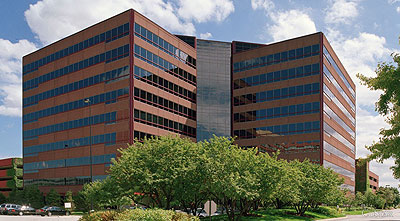February 2013
Suburban office recovery: The untold story
By Linda Garske

Downtown office leases may be stealing headlines, but companies seeking Chicago office space in 2013 are finding competitive lease rates and more properties to choose from by searching the metro area’s suburban markets.
Granted, the central business district has landed several fantastic lease commitments in recent months. Google’s lease for its Motorola Mobility subsidiary filled the top four floors of the Merchandise Mart, removing more than 572,000 square feet of vacant space in a single lease. And Sara Lee’s decision to take 221,000 square feet in the central business district’s West Loop submarket marked another, highly celebrated gain for downtown, albeit at the expense of Downers Grove in the East-West Corridor.

But the numbers don’t lie: Tenants leased more space in Chicago’s suburbs than in the central business district during the 2012 calendar year. Office absorption, or the net increase in the amount of leased space, totaled 2.4 million square feet in the suburbs last year, outstripping by more nearly 40 percent the 1.6 million square feet of absorption in the central business district, NAI Hiffman’s researchers found.
Capital One took nearly all of the remaining space in Atrium Corporate Center in Rolling Meadows with a lease for 150,000 square feet last summer. Catamaran Corp. leased more than 300,000 square feet when it relocated its headquarters to Schaumburg in the third quarter, lured by attractively low lease rates in the high-vacancy Northwest Suburban submarket.
That disproportionate absorption is even more remarkable given that the central and outlying markets have roughly equal volumes of space to work with; suburban office space totals about 126 million square feet, versus 135 million square feet at the Chicago metro’s center.
What’s the story behind this recent leasing activity, and what does it mean for companies that are still in the market to lease new space this year?
The pattern that has emerged in the Chicago office market has its roots in the cyclical dip that began in 2008. The financial crisis brought most corporate expansion plans to a halt and leasing activity stalled across the metro area and nation.
As leases matured over the subsequent months, many employers downsized to smaller digs, while others negotiated to reduce their existing space or defaulted on their lease commitments and closed their doors altogether. As in almost every real estate cycle in living memory, these soft market conditions fueled a “flight to quality,” in which tenants from lesser quality properties upgraded to newer and better-appointed Class A buildings at very attractive lease rates.
After several years of accelerating leasing activity, the supply of available Class A space is finally shrinking and the window is closing on the chance to lock in bargain lease rates for those properties. For the first time in many years, tenants are competing for spaces in buildings, and landlords are now willing to wait it out if the economics of a deal on the table fail to meet expectations. Many of NAI Hiffman’s institutional clients that own office properties in Chicago are expecting Class A occupancy to reach a point in 2013 that enables landlords to begin raising rental rates on new leases.
Some great deals remain in the Class A office market, but opportunities are dwindling. The Class A vacancy rate in the central business district had fallen to 13.8 percent at the end of the fourth quarter, having nearly subsided to pre-crisis levels.
Tenants have more Class A spaces to choose from in the suburbs, where the vacancy rate for those properties was just less than 20.7 percent at year’s end, but increasing competition for choice properties is sure to usher in increases in asking rent before the year is out.
Clearly, the pendulum will swing in favor of office landlords in 2013, first in the central business district and then in many suburban submarkets. And while the downtown market tightens up, the suburban markets are ready for new arrivals and to support the continued growth of suburban office users. Companies still have an opportunity to negotiate a great deal on a new office lease, particularly at a suburban property, but the time to act is now.
Linda Garske is senior vice president at NAI Hiffman in Oakbrook Terrace.
Source: The Daily Herald Business Ledger


